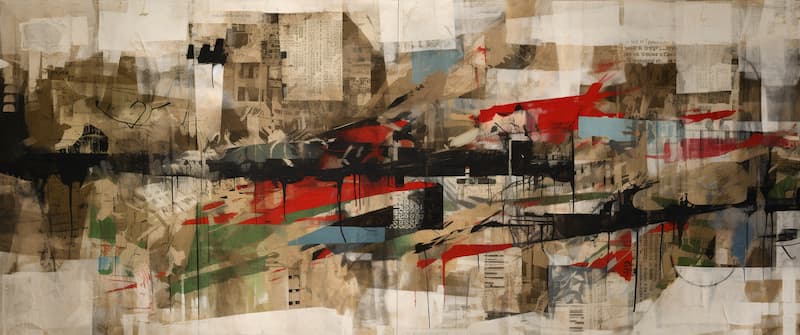The U.S. Supreme Court's decision to decline the hearing of computer scientist Stephen Thaler's challenge against the U.S. Patent and Trademark Office's refusal to issue patents for AI-generated inventions raises questions about the role of AI in innovation, the legal definition of an inventor, and the potential impact on investments and competitiveness in the global market.
Legal Definition of an Inventor
Challenges in Defining Inventors
The rejection of Thaler's patent applications for the inventions created by his AI system, DABUS, highlights the challenges in defining inventors in the context of emerging technologies. The U.S. Patent and Trademark Office, a federal judge in Virginia, and the patent-focused U.S. Court of Appeals for the Federal Circuit all agreed that inventors must be human beings, excluding AI-generated innovations from receiving patents. The current legal definition of an inventor is based on the traditional understanding that only humans can create inventions. However, this perspective may not adequately address the evolving capabilities of AI systems.
Potential Implications for Innovation
The legal requirement for inventors to be human beings could have significant implications for innovation in various fields. Thaler argued that AI is being used to innovate in areas such as medicine and energy, and that the refusal to grant patents for AI-generated inventions would limit the patent system's ability to stimulate innovation and technological progress, potentially contradicting Congress's intent. The increasing role of AI in various industries suggests that the legal definition of an inventor may need to be revisited to accommodate the changing landscape of innovation.
Impact on Investments and Competitiveness
Jeopardizing Billions in Investments
Thaler's supporters, including Harvard Law professor Lawrence Lessig and other academics, have warned that the Federal Circuit's decision could jeopardize billions of dollars in current and future investments. Investors and companies may be hesitant to invest in AI-driven research and development if the resulting innovations cannot be patented, reducing incentives for progress in AI technologies. Moreover, without the protection provided by patents, companies may be more reluctant to share their AI-generated innovations, limiting opportunities for collaboration and knowledge-sharing across industries.
Threats to U.S. Competitiveness
The refusal to issue patents for AI-generated inventions could also threaten U.S. competitiveness in the global market. Thaler has sought patents for his AI-created inventions in other countries, including the United Kingdom, South Africa, Australia, and Saudi Arabia, with limited success. Different legal approaches to AI-generated patents in various jurisdictions may create an uneven playing field, potentially disadvantaging U.S. companies and researchers. In a rapidly changing technological landscape, the U.S. may need to reconsider its stance on AI-generated patents to maintain its competitive edge and continue to foster innovation.
Ethical Considerations of AI-generated Inventions
Ownership and Responsibility
As AI-generated inventions become more prevalent, ethical considerations regarding ownership and responsibility must be addressed. If an AI system is considered the inventor of creation, it raises questions about who should be held accountable for any potential legal, safety, or ethical issues arising from the invention. The current legal framework attributes responsibility to human inventors, which may not be applicable in cases where AI systems autonomously create innovations. Developing new guidelines for responsibility in the context of AI-generated inventions is crucial for navigating this complex issue.
Impact on Human Creativity and Job Market
The growing role of AI in the innovation process also raises concerns about its potential impact on human creativity and job opportunities. While AI-generated inventions can contribute to significant advancements in various fields, there is a risk that human inventors might be overshadowed or replaced by AI systems. This could lead to job displacement and reduced opportunities for creative expression among human inventors. Balancing the benefits of AI-generated inventions with the need to protect and encourage human creativity is essential for fostering a sustainable and inclusive innovation ecosystem.
Alternative Approaches to AI-generated Patents
Collaborative Inventorship
One potential approach to addressing the issue of AI-generated patents is to consider collaborative inventorship, where both human and AI entities are recognized as co-inventors. This approach could provide a more inclusive legal framework for AI-generated inventions while still maintaining the need for human involvement in the innovation process. Collaborative inventorship would encourage the development of AI systems that complement and enhance human creativity, rather than replace it, thus fostering a more synergistic relationship between humans and AI in the realm of innovation.
Incentive Systems for AI-generated Innovations
Another possible solution is to develop alternative incentive systems for AI-generated innovations that do not rely solely on traditional patent protections. These incentives could include financial rewards, public recognition, or other forms of support for the development and dissemination of AI-generated inventions. Such systems could encourage investment in AI-driven research and development while maintaining a focus on the collaborative nature of innovation involving both human and AI entities. By exploring alternative incentive structures, the benefits of AI-generated inventions can be harnessed without undermining the importance of human creativity and participation in the innovation process.
International Harmonization of AI-generated Patent Laws
Global Disparities in Legal Approaches
The varying legal approaches to AI-generated patents in different jurisdictions can create inconsistencies and challenges for inventors, companies, and investors. As Thaler's attempts to secure patents for AI-generated inventions in countries such as the United Kingdom, South Africa, Australia, and Saudi Arabia demonstrate, the international community lacks a cohesive stance on this issue. The disparities in legal approaches can lead to an uneven playing field for inventors and hinder cross-border collaboration and knowledge-sharing.
The Need for International Collaboration
To address the global disparities in AI-generated patent laws, international collaboration is essential. Policymakers, legal experts, and industry stakeholders from different countries must engage in dialogue and share insights to develop a more harmonized approach to AI-generated patents. International organizations, such as the World Intellectual Property Organization (WIPO), could play a crucial role in fostering this collaboration by providing a platform for discussion and the exchange of best practices. Such cooperation would help ensure a more consistent and fair legal framework for AI-generated inventions, benefiting inventors, companies, and society as a whole.
The Future of AI-generated Inventions and Intellectual Property
Emerging Challenges in Copyright Law
The debate surrounding AI-generated patents also extends to other areas of intellectual property law, such as copyright. Thaler's challenge to the U.S. Copyright Office's decision to deny copyright protection for art created by his AI system highlights the broader implications of AI-generated works in the realm of intellectual property. As AI systems become more capable of creating artistic works, literature, and music, questions about ownership, attribution, and protection will become increasingly relevant.
Adapting Intellectual Property Laws to Technological Advancements
The rapid advancements in AI technology necessitate a reevaluation of intellectual property laws to ensure they remain relevant and effective in protecting and encouraging innovation. As AI-generated inventions and works continue to proliferate, policymakers must consider whether current legal frameworks are sufficient to address the unique challenges posed by these new forms of creation. By adapting intellectual property laws to accommodate the evolving landscape of AI-generated works, societies can better harness the potential of AI-driven innovation while maintaining a fair and inclusive system that promotes creativity and progress.
Summary
In summary, the U.S. Supreme Court's decision to decline the hearing of AI-generated patent cases has ignited a debate on the role of AI in innovation, the legal definition of an inventor, and the potential impact on investments and global competitiveness. The current legal framework may need to be revisited to accommodate the evolving capabilities of AI systems in various industries. Alternative approaches, such as collaborative inventorship and incentive systems, could provide more inclusive legal frameworks for AI-generated inventions. Furthermore, international collaboration is essential to address global disparities in AI-generated patent laws, and intellectual property laws may need to adapt to the rapid advancements in AI technology. By engaging in this debate and adapting policies, societies can better harness the potential of AI-driven innovation while promoting creativity and progress.







